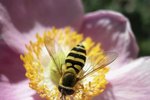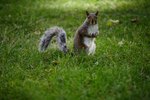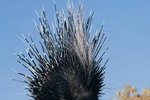
Porcupines, known for their sharp quills, are large rodents that inhabit most continents. The North American porcupine is a tree dweller and has a range that covers much of New England, the western United States and Canada. Porcupines communicate primarily with sound, smell and their quills, as they have poor, nearsighted vision. Much of their communication centers around deterring threats and finding mates.
Quills
The porcupine is easily recognized by its many quills, which are long, sharp and stiff, especially along the animal’s back and tail. When the porcupine’s quills lie flat, the animal communicates that it does not feel threatened. If disturbed or in danger -- like when a predator is afoot -- the porcupine raises its quills to attention. It will also wag its heavily quilled tail. These defensive mechanisms communicate to a predator that the porcupine is alert to its threat and will injure the predator with its quills if necessary.
Scent
Porcupines rely heavily on scent marking to communicate, particularly in mating. Females use vaginal secretions and urine deposits to indicate readiness for mating. Males spray urine on females’ urine deposits as well as directly on females during copulation. Porcupines also use scent when they're hunted, emitting a strong, foul odor to warn or deter their predators.
Vocalization
Vocalization is important to porcupine communication and is produced in a variety of ways, depending on the situation. Porcupines use tooth chattering, grunts, shrieks and other sounds that are easily discerned with the animals’ excellent hearing. They use tooth chattering to warn predators before resorting to a scent warning. Females use a high-pitched shriek to indicate readiness for mating, and males use loud vocalizations when competing for a female mate. Mothers and young communicate their position with grunts.
Touch
Porcupines use tactile communication, through light touch or more physically aggressive contact, for mating, competition or defense. When a male and female porcupine meet, they may rub noses or front paws as part of a courtship ritual. Males may bite other males, or cause harm with their quills, in competition for a mate. When encountering a predator, the porcupine’s last resort is to make contact with their sharp quills, if initial quill display, scent and sound do not deter the predator.
References
Photo Credits
-
NA/Photos.com/Getty Images
Writer Bio
E. Anne Hunter has more than a decade of experience in education, with a focus on visual design and instructional technology. She holds a master's degree in education. Hunter has contributed to several professional publications, covering education, design, music and fitness, among other topics.




